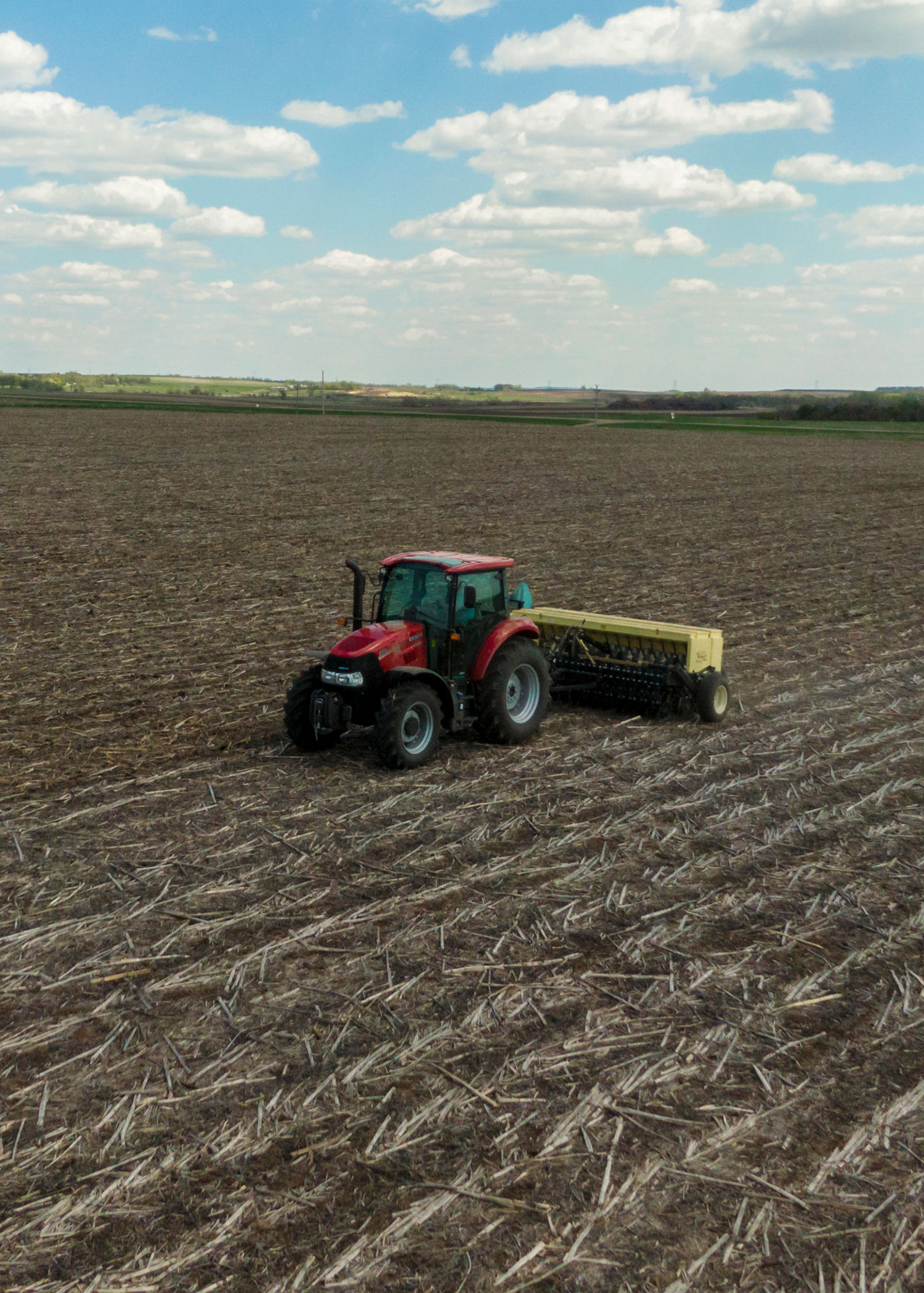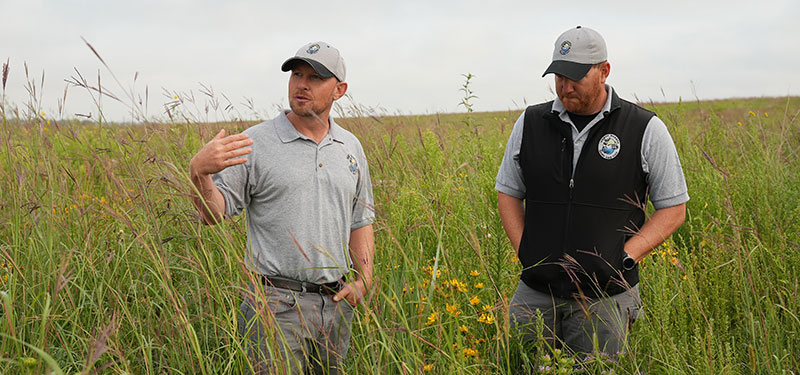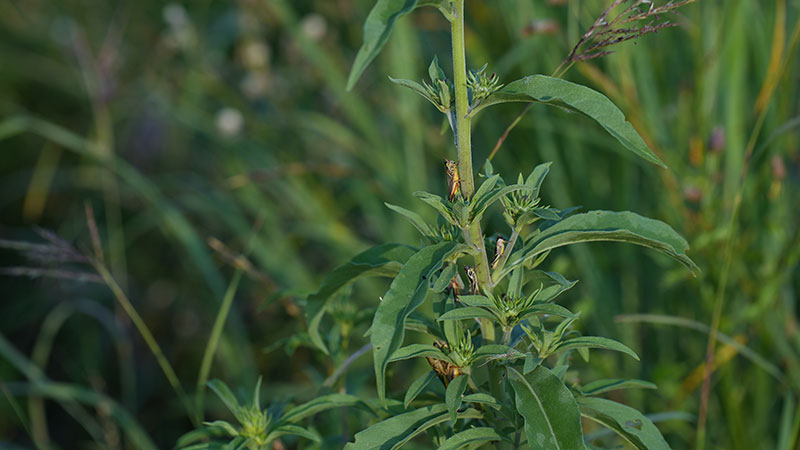WMA Grassland Restoration
Ron Wilson

What separates the North Dakota Game and Fish Department’s more than 200 owned or managed wildlife management areas is townships, counties, miles.
What makes the 200,000-plus WMA acres found across the state similar is a concentrated effort to improve wildlife habitat and provide opportunities for hunters and other outdoor enthusiasts.
Robert W. Henderson WMA, located just 6 miles east of Bismarck, is a good example of this effort.
Five years ago, 100 acres of the roughly 550-acre WMA was a mat of Kentucky bluegrass.
“The bluegrass got to be about 6- to 10-inches tall then it just matted itself out,” said Levi Jacobson, Department wildlife resource management supervisor in Bismarck, of the land that was previously farmed.
“We were grazing it aggressively to try and bust through some of that and bring some of the native plants back and we just weren’t gaining ground.
So, we had the neighboring landowner come in and farm it for three years with soybeans, corn and soybeans again.”
After the last harvest, Jacobson and crew in May 2022 planted a diverse, native mix of 13 forbs and 10 grasses to mimic the native prairie that once dominated the landscape.
“The first year it was planted it was really dry and we didn’t know how successful the planting would be as it often takes a couple years to express vegetation above ground as most of the growth is put into establishing roots,” Jacobson said.
“And then this year, with all the moisture it really blew up and looks really good.”
Earlier in summer, some of the native species were shoulder-high and taller, with an impressive undergrowth.
The wildlife in the area, from deer to pheasants, to many other bird species, should benefit.
“We try to go heavy on the forbs and the wildflowers because those are going to produce food and the grass is going to provide a lot the cover,” Jacobson said.

Bill Haase (left) and Levi Jacobson, both with the Game and Fish Department, stand in the waist-high and taller forbs and grasses at Robert W. Henderson Wildlife Management Area near Bismarck.
“The forbs bring in the insects.
Those pheasant chicks, in this quality brood rearing habitat, need insects for the first few weeks of their life.”
While the native species have thrived at Henderson and other WMAs thanks to timely rains in spring and summer, Bill Haase, Department assistant wildlife division chief, knows that Mother Nature is unpredictable in any given season.
There’s not much that’s going to stay in a couple inches of short grass while you’re out hunting.
So, these diverse, big, tall stands of grass are pretty important.”


